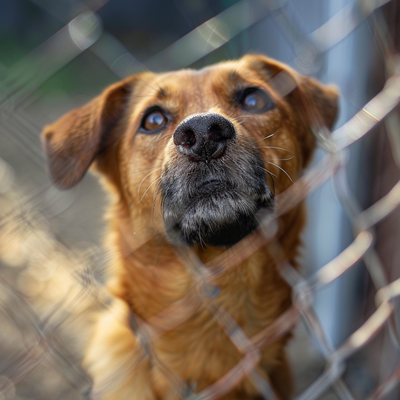Easiest Dog Breeds to Train [Sassafras Lowrey CPDT-KA]
All dogs require training, and individual dogs will pick up skills at different rates, but some dog breeds have a reputation for learning faster than others. These are dog breeds that often have a long attention span, learn and retain skills quickly, and enjoy learning.
The American Kennel Club divides dog breeds into seven categories: Herding Dogs, Sporting Dogs, Hounds, Working Dogs, Terriers, Toys, and Non-Sporting.

Easiest Dog Breeds to Train:
Most of the easiest dog breeds to train are going to be Herding dogs and Sporting dogs, including search and rescue dogs. These breeds were developed to work closely with people. They maintain that instinct to this day, and love learning new skills. If you’re looking for a dog who will be a quick learner, these breeds top the list of “easiest to train”.
Australian Shepard
First developed in the United States for moving livestock, these active herding dogs are quick to learn everything from herding to dog sports. Australian Shepherds are medium-sized, high-energy dogs that are always up to learning new skills and staying active with their families.
Border Collie
Often considered the most intelligent and trainable breed of dog, the Border Collie was bred to be quick thinking. These top athletes are seen frequently in dog sports, require lots of exercise and are extremely hardworking. The border collie learns new skills quickly and thrives with jobs that provide plenty of physical and mental stimulation.
Corgi
Both varieties of Corgis, the Cardigan Welsh Corgi and the Pembroke Welsh Corgi are known for their lovely disposition and intelligence. These small but strong dogs were first bred as herding dogs to move livestock. A big dog in a small package, these herding dogs thrive in active homes, and enjoy training.
English Springer Spaniel
This intelligent dog was first bred to be a companion dog and to assist hunters. The English Springer Spaniel is a people-pleasing breed that is quick to learn new skills and enjoys spending active time with their families. English Springer Spaniels make great active companions, are easy to train, and are able to learn new skills quickly.
German Shepherd
An all-around working dog, the German Shepherd dog was bred to work closely with people. This large and confident breed forms deep bonds with their human companions. Originally a protective herding dog, this breed picks up new skills quickly at home or on the job. The German Shepherd is a versatile worker that excels in police work, search and rescue, and service dog work.
Golden Retriever
This active sporting dog is known as an ideal family companion dog. First bred to assist hunters by retrieving game, the Golden Retriever is a quick learner that can be very successful in dog sports, as a service dog, and in search and rescue work. The Golden Retriever is quick thinking and is highly responsive to training.
Labrador Retriever
A favorite family dog, the Labrador Retriever was first bred to retrieve a game for hunters. Today the breed is frequently used for search and rescue, narcotic and bomb detection, as well as service dog work. This popular breed of dog makes a great active pet, and quickly picks up new behaviors and skills in training.
Papillon
This toy breed dog is known for their athleticism and for being quick learners. Don't let their small size fool you, Papillons are active little dogs who pick up on training quickly. Today the breed excels in a wide variety of dog sports and activities, and loves learning new skills.
Poodle (toy, miniature and standard)
Although the breed has a reputation for their elaborate dog show hairstyles, don’t ever underestimate the quick-learning poodle. Poodles are hardworking breeds that come in three breed sizes: standard (the largest), miniature, and toy (the smallest). Poodles were originally bred to be water retrievers, working with hunters. Today, poodles of all three sizes make excellent, inquisitive, and easily trainable companions.
What Was the Dog Bred to Do?
When choosing the right breed of dog for you or your family, it’s essential not to focus on liking how a particular breed looks, but instead to focus on a breed’s purpose and temperament.
Each breed of dog was developed for a particular purpose. As a result, these breeds will have specific behavior and temperament traits that may make them easier or harder to train. Dog breeds that were originally bred to work collaboratively with people are often easier to train than other breeds of dogs.
However, just because a dog is easy to train doesn't mean that the breed is going to be a good match for your home and family. Many easily trainable breeds are highly intelligent dogs who were bred to do active jobs like herding livestock and working alongside hunters. Dogs of these breeds maintain this drive to learn and work and won’t be happy being home alone all day.
Dogs that are the easiest to train are very intelligent, generally active, and need outlets for their energy. These dogs are great for people with an active lifestyle, but can become bored easily if not provided enough stimulation. This can lead to unwanted or destructive behaviors.

Hardest Dog Breeds to Train:
There are a variety of breeds that are often given the reputation of being challenging to train, but it doesn't mean they aren’t smart. All dogs can and should be trained.
Hounds and terriers frequently have reputations of being difficult to train. These are breeds of dogs that were developed to work independently and are less naturally driven to look to people for direction. When it comes to training these dogs, you’ll need to find the right motivation. It’s also helpful to keep your training sessions fun, positive, short, and playful.
Breeds of dogs with a reputation for being difficult to train include:
Basenji
The Basenji is a small and independent hound often considered to be somewhat cat-like in behavior and temperament. The independent nature of the breed gives them a reputation as being difficult to train.
Beagles
Like many other hounds, Beagles were first bred to use their nose as they hunted in packs. As a result, it can be challenging to train beagles to ignore scents and perform cued behaviors.
Great Pyrenees
Like other livestock guardian breeds, the Great Pyrenees was bred to work independently protecting livestock from large predators. These large independent dogs are highly intelligent but can be indifferent to engaging in training.
Siberian Huskies
The independent and high-energy Siberian Husky was first bred to work in packs of other huskies pulling sleds. Their independent nature can make them more challenging to train.
The Parson Russell Terrier
The Parson Russell Terrier like other terriers are strong willed, active, independent, and intelligent dogs. These bold dogs are high energy, first bred to flush foxes from burrows. These scrappy little ones thrive when given opportunities to utilize their natural instincts.






![How to Train a Search and Rescue Dog [Dog Trainer Explains]](http://shop.bullymax.com/cdn/shop/articles/Search_and_Rescue_Dogs_in_dog_training_court.jpg?v=1713867590&width=400)

